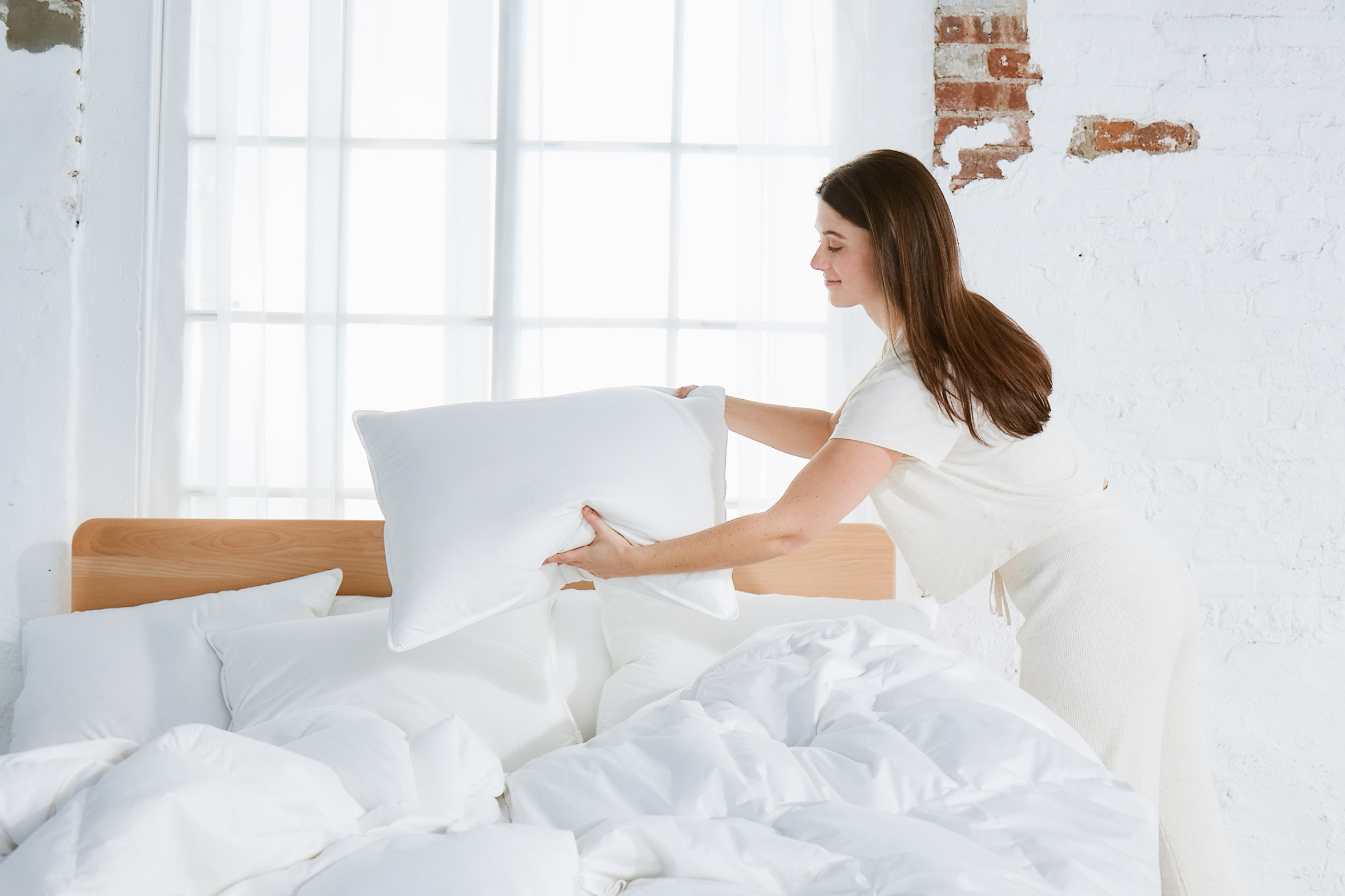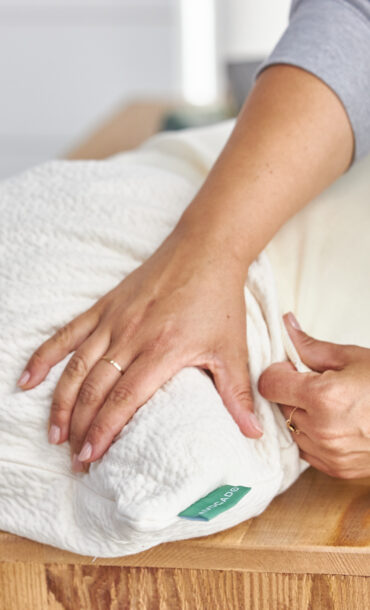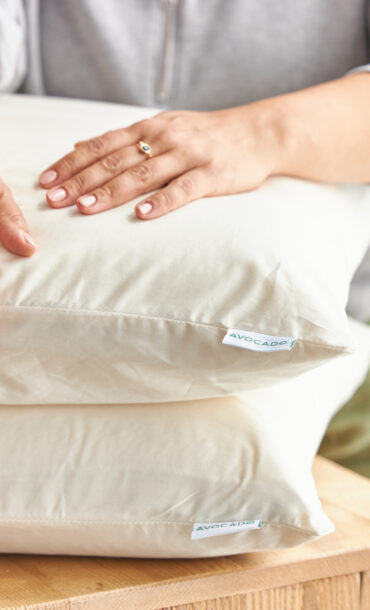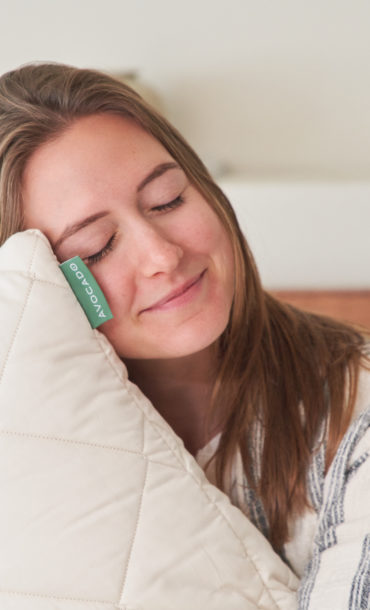Pillows are essential for restorative sleep. Here’s how to wash, fluff and know when to replace your pillows so you can rest on them for a long time.
Your pillows used to be a dream to rest on. Then, something started to feel a little off. All pillows are bound to collect dust, dead skin cells, oils, and sweat and become lumpy or flat. Over time, this ordinary wear and tear—from all those hours of lounging and sleeping—can have you tossing and turning and waking up with body aches.
From neck pain to allergies to the eyesore of yellow stains, your pillows may be overdue for a deep wash and fluff or even a replacement. Proper care can help extend your pillow’s longevity so you can get more use out of them without sacrificing a good night’s sleep. Pillows made with high-performance, quality materials, like GOTS-certified organic cotton and GOLS-certified organic latex, last longer, too!
Here’s when and how to clean, fluff, and replace your pillows.
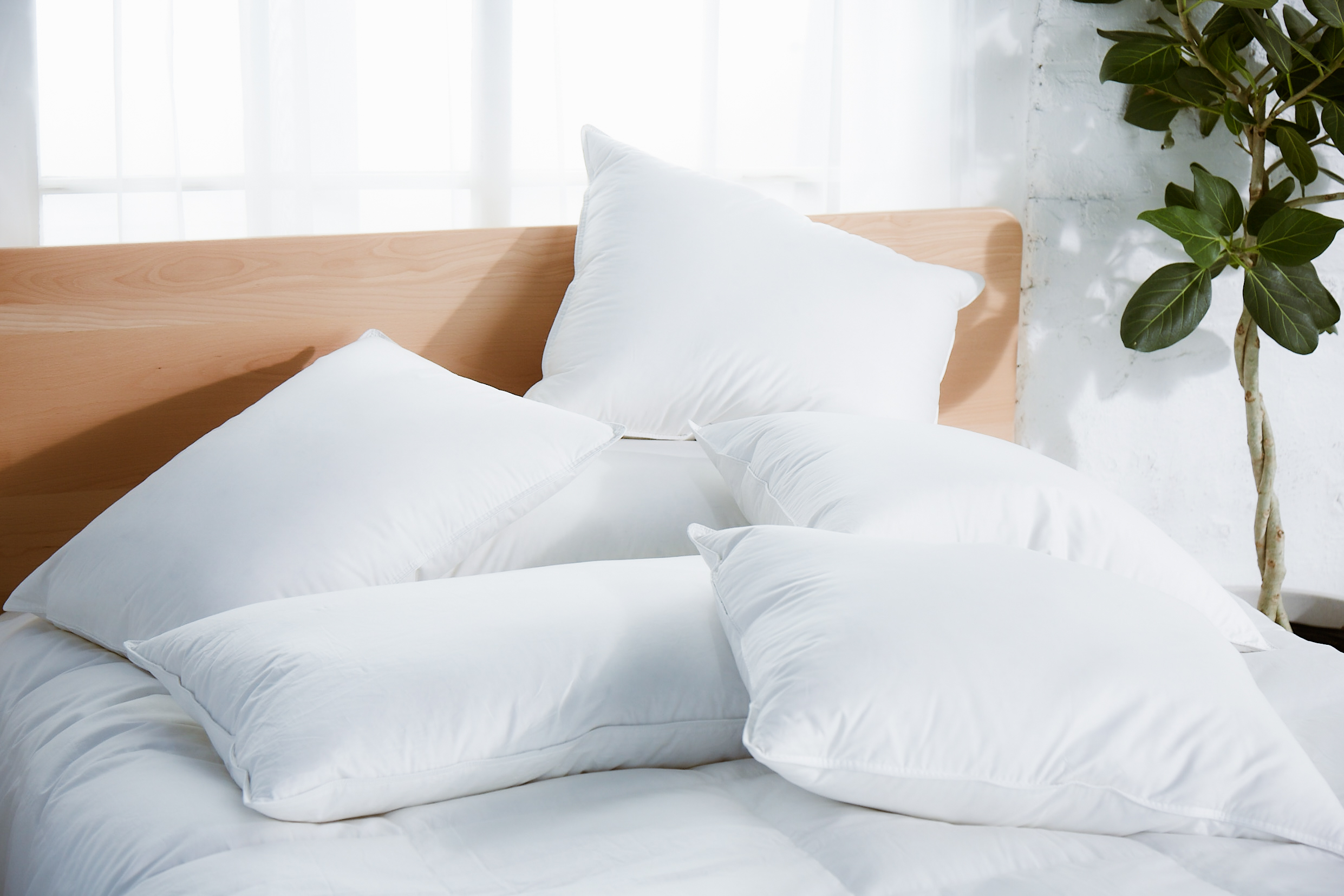
How often you should clean pillows
It depends on the material. Down, down alternative and feather pillows require minimal care routines and benefit from regular airing and spot cleaning. Memory foam and other synthetic material pillows can’t be submerged in water, so inspect them regularly and spot clean when necessary.
Avocado Green and Molded Latex pillows are great options because they make maintenance and cleaning easy. Both options come with a machine-washable cotton cover. It’s recommended to wash the cotton cover in cold water with your favorite eco-friendly laundry detergent, avoiding the use of bleach. Instead of the dryer, you can lay flat or hang to dry.
There are a few additional factors to consider:
- Allergies: Do you suffer from allergies or asthma? You’re more susceptible to dust mites and other allergens that collect in pillows. Wash your pillows every six to eight weeks to minimize exposure.
- Pets: Do you share your bed with a pet? Their fur and dander can soil your bedding and pillow—especially if your furry friend loves to curl up against your face in the mornings. Wash your pillows every two to three months.
- Sweating: Are you a hot sleeper who sweats? Your pillows will retain some of that moisture. Wash them every three to four months, if not more.
Preserving your pillows from natural elements and spills and regularly washing your covers will minimize the need for frequent pillow cleaning. Always cover them with a pillow protector and pillowcase. Then, wash or swap out your pillowcases and other organic bedding weekly and your pillow protectors every two to three months.
And, of course, no matter the material or how often you clean your bedding, if your pillows are visibly dirty, have an unpleasant odor, or cause an allergic reaction, it’s time for a wash.
Read more: Upgrade Bedtime With a Silk Pillowcase
Can pillows be put in the washer and dryer?
Before you toss a pillow in the washer or dryer, take a moment to read the instructions or decipher the laundry symbols on the care label sewn onto the seam.
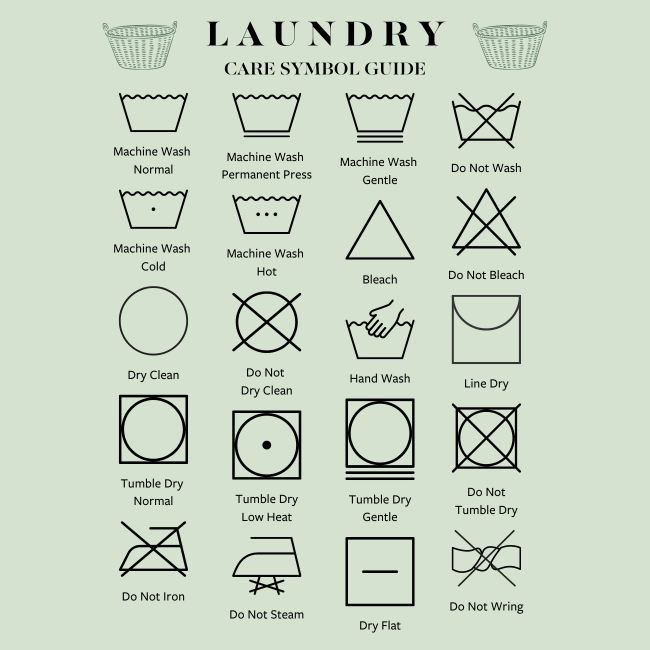
Typically, you can machine-wash and dry your down alternative and feather pillows, but not ones made with memory foam and latex. Instead, vacuum both sides and gently spot-clean these more delicate materials with a soap solution and damp cloth. If there are particularly tough stains—no matter the material—pre-treat them by pouring a small amount of detergent on them for a deeper clean. Certain memory foam pillows can also be hand-washed.
For machine-washable pillows:
- Select a gentle cycle and use a mild detergent with cool water.
- If your machine is large enough, you can launder two pillows together to help keep the machine balanced during the spin cycle.
- An extra rinse cycle will remove any lingering residue.
When it’s time to dry, double-check the care label. Generally, the safest option is to use the lowest heat setting. However, if your dryer doesn’t have a low heat setting or you prefer a more natural approach, you can air dry your pillows in a well-ventilated area with good air circulation or outside in the sun. Hang or lay them flat and flip them every so often. The only downside is it’ll take several hours, depending on the size and thickness of the pillow.
After cooling from the dryer’s heat or the sun, make sure each pillow is completely dry. Adding them back to your bed or storing them while damp can lead to harmful mildew and mold growth.
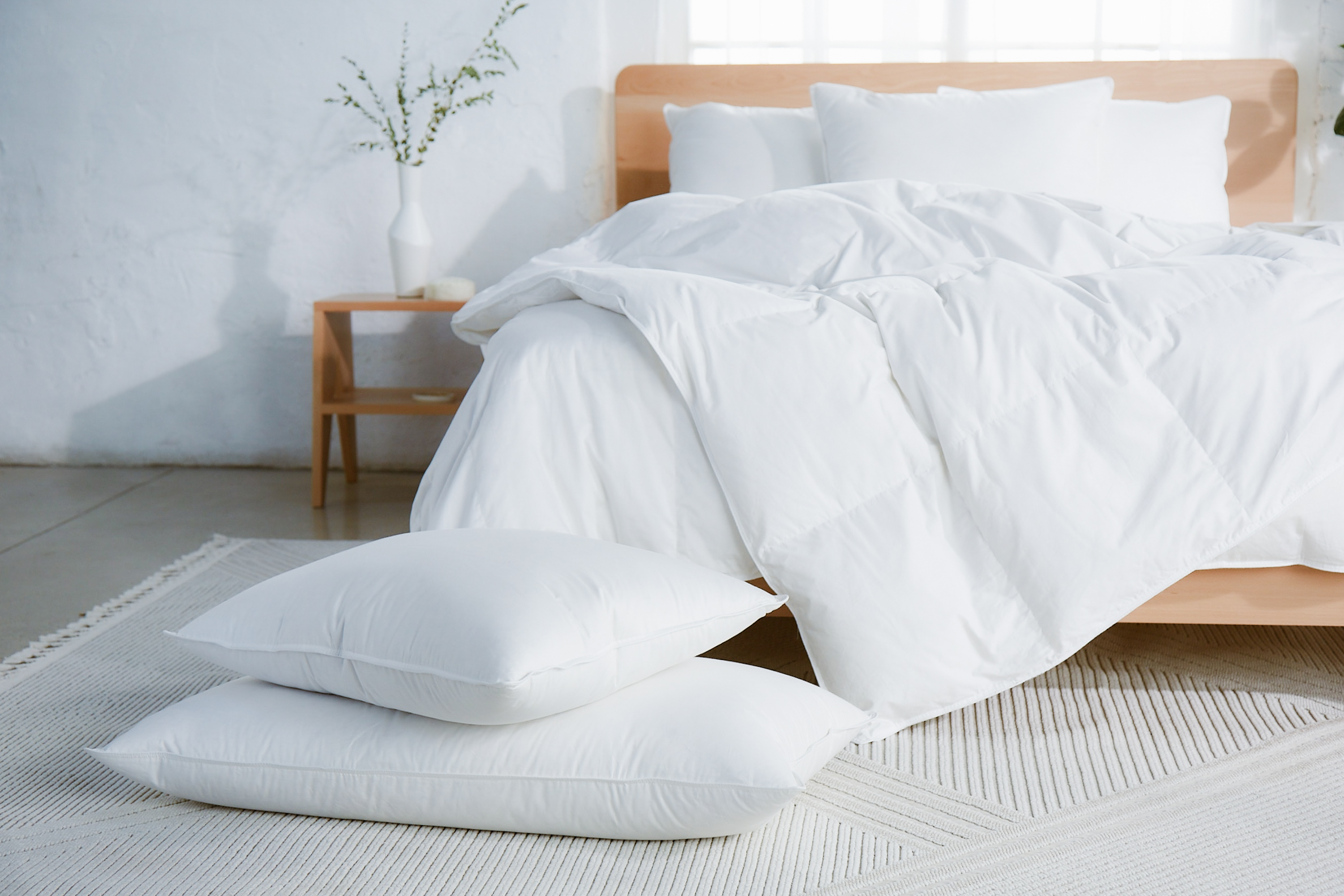
Read More: How Often Should You Wash Your Sheets and Bedding
Fluffing Pillows
What’s comfier than plopping onto a pile of pillowy cushions—no flat pillow in sight? Beyond the perfect-for-you firmness and how full and inviting your bed looks, eventually, all pillows need a good fluff. Fluffing can restore a pillow’s loft—its thickness or height—and maintain its shape to be more comfortable with better head and neck alignment. It can also increase airflow within a pillow, making it cooler to sleep on.
If you want to add fluffing to your daily habits, it can be your final step when making your bed. To do it by hand, follow these steps:
- Hold the pillow by the opposite diagonal corners and clap them together a few times. Then, rotate and do the same with the other two corners.
- Gently massage the pillow with your hands to fluff the filling and even out any clumps. Pay extra attention to areas that may be more compressed, like the flattened spot where your head typically rests. This will help restore its shape.
- Give the pillow a good shake to settle it evenly.
Or, toss a couple of clean tennis balls or dryer balls in with your pillows in the dryer. They’ll bounce around, fluffing the filling.
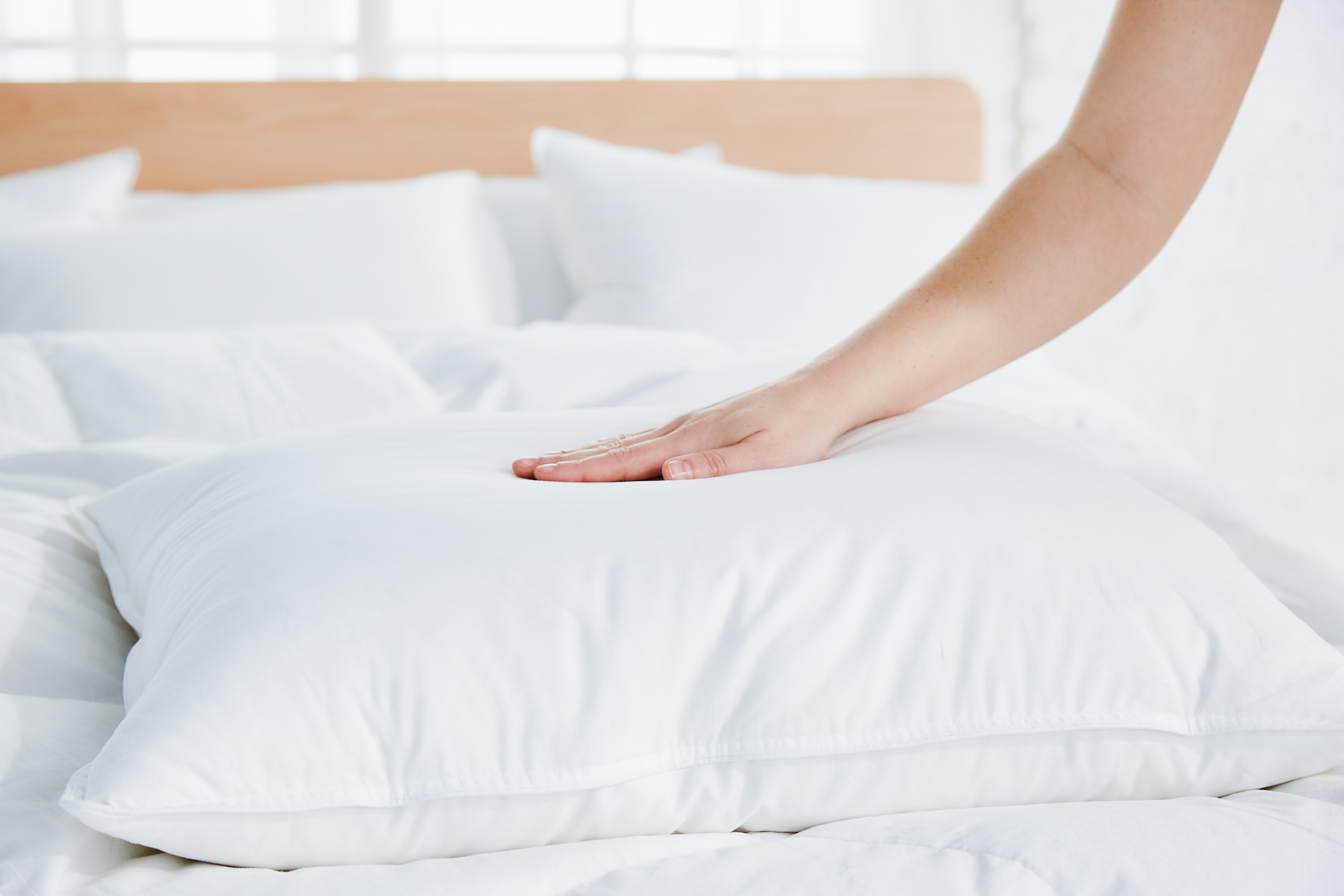
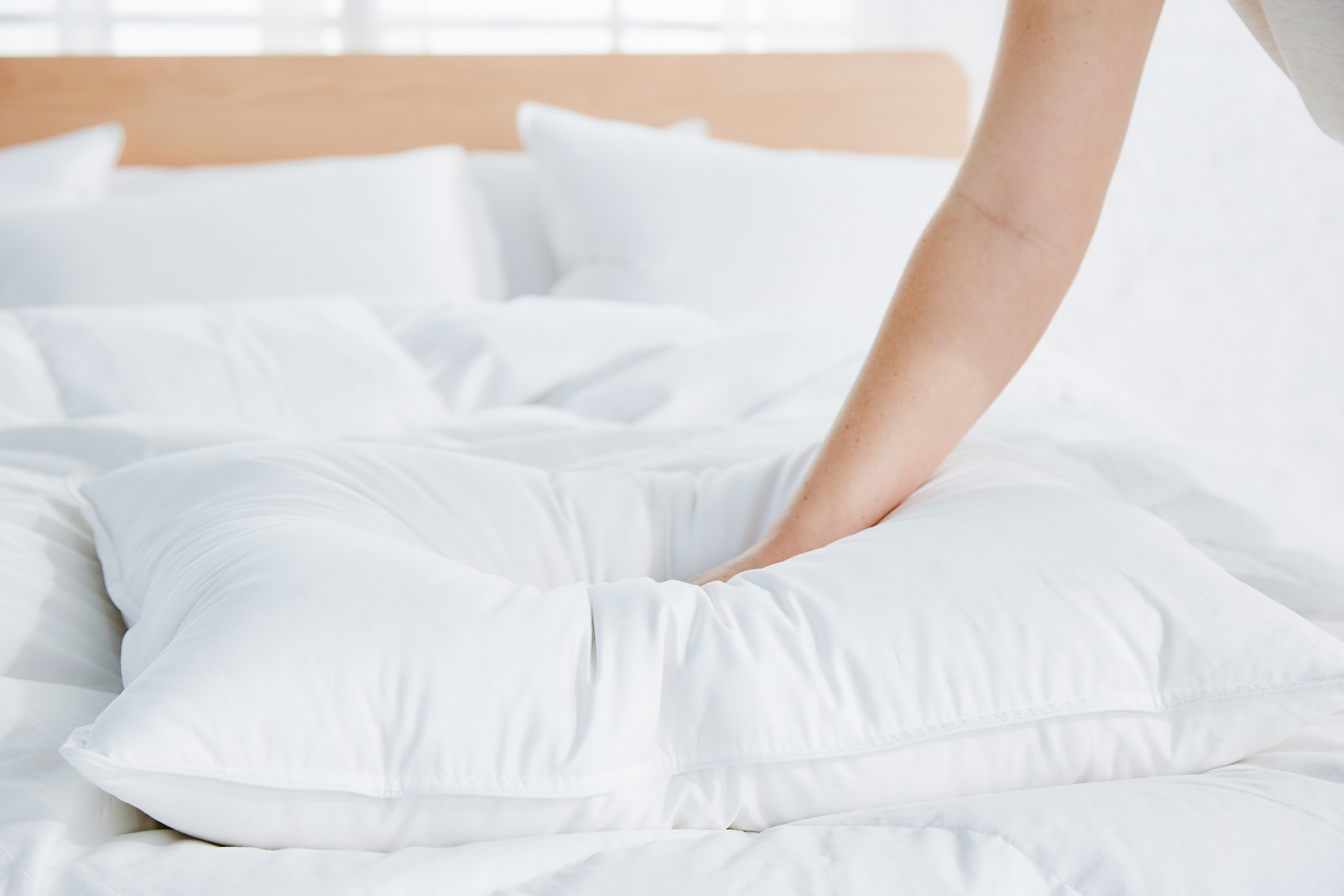
Replacing Your Pillows
So you’ve been sticking with your wash and fluff schedule for some time now, but your pillows aren’t springing back to life as much as you want them to. The most common sign that it’s time to replace a pillow—whether it’s loft loss, a musty odor, or uneven filling—is if you wake up with discomfort every day and no longer feel like it’s providing adequate support and comfort.
If it’s a filling issue, try a pillow refill before getting rid of it. Some pillows, like our Green Pillow and Mini Pillow, are designed for adjustments and extra restoration until a replacement is necessary.
Replacing an old, shabby pillow with a fresh, non-toxic, more supportive one will reduce pain and stiffness so you can relax and improve your sleep quality.
Read More: Optimize Your Sleep: Choosing the Right Pillow for Comfort and Support
Have feedback on our story? Email [email protected] to let us know what you think!

Shop Pillows
The Essential Organic Pillow Collection
Gentle, breathable, non-toxic support.




